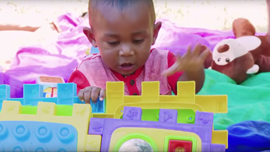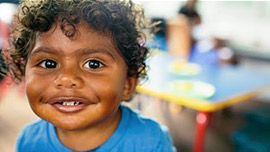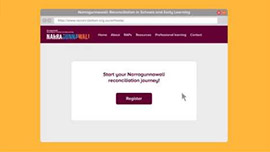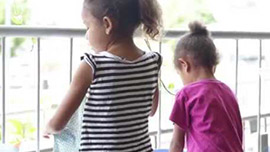Creating a better future for children and their families starts from the very beginning – from conception and pregnancy through infancy and early childhood education. By the age of three a child’s brain has reached 90 per cent of its adult size and many of the neural pathways have developed.
target
Halve the gap in mortality rates for Indigenous children under five within a decade (by 2018).- The target to halve the gap in child mortality by 2018 is on track.
- Since 1998, Indigenous child mortality rates have declined and the gap has narrowed.
- There have been some improvements in recent years in the proportion of Indigenous mothers attending antenatal care and reduced rates of smoking during pregnancy.
- Prenatal and postnatal care, parent and family programmes and support for vulnerable children, as part of a whole-of-community approach, are critical to giving children the best start in life.
WHAT PROGRESS IS BEING MADE?
This target is on track. Figure 1 shows the 2014 Indigenous child mortality rate was within the range to meet the target by 2018.1 Over the long-term (1998 to 2014), the Indigenous child mortality rate declined significantly (by 33 per cent). There was also a significant narrowing (34 per cent) of the child mortality gap. In the short-term, there was a decline in Indigenous child mortality rates of around 6 per cent from the 2008 baseline. 2,3
Any death of an infant or child is a tragedy. Preventing these deaths is a universal responsibility that demands commitment from all governments. In the period 2010 to 2014, there were 611 Indigenous child deaths, of which 505 (or 83 per cent) were infant deaths (children aged less than one year). The Indigenous infant mortality rate has more than halved from 13.5 per 1,000 live births in 1998 to 6.4 in 2014, and the gap has narrowed significantly (by 84 per cent) over this period. While these improvements are encouraging, there remains an unacceptable disparity between Indigenous and non-Indigenous infant mortality rates.
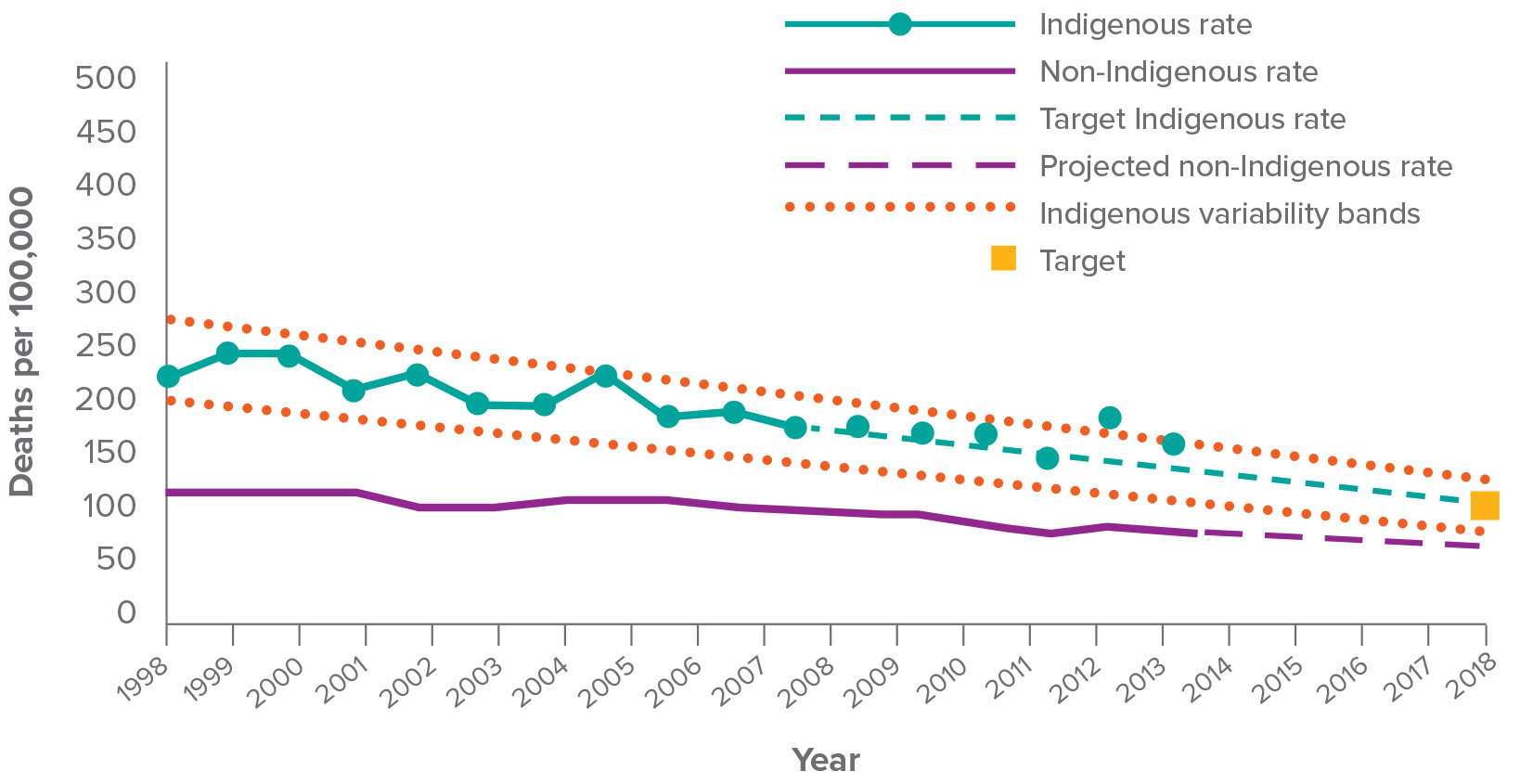 Source: ABS and AIHW analysis of National Mortality Database
Source: ABS and AIHW analysis of National Mortality Database
There are encouraging signs of improvement in key factors which influence the health of Aboriginal and Torres Strait Islander children including access to antenatal care, rates of smoking during pregnancy and child immunisation.
Most Indigenous mothers and their babies are doing well. Regular antenatal care provides the foundation for good health outcomes for mothers and babies (AHMAC, 2015). Between 2010 and 2013, the proportion of Indigenous mothers who attended antenatal care in the first trimester of pregnancy increased from 50 per cent to 52 per cent. However, these rates were still lower than for non-Indigenous mothers in 2013 (60 per cent). The proportion of Indigenous mothers receiving antenatal care in the first trimester was highest in very remote areas (59 per cent) and lowest in major cities (43 per cent) (AIHW, 2015).4
Unfortunately, the proportion of babies born to Indigenous mothers with low birth weight has remained around 12 per cent over the period 2003 to 2013 – twice the rate for babies born to non-Indigenous mothers. Smoking during pregnancy is a major factor contributing to the high rates of low birth weight among babies born to Indigenous mothers. A multivariate analysis of 2009 to 2011 data showed that 51 per cent of low birth weight births to Indigenous mothers were attributable to smoking during pregnancy, compared with 19 per cent for other mothers (AHMAC, 2015). The proportion of Indigenous mothers who smoked during pregnancy declined from 50 to 48 per cent between 2009 and 2013. However, this remains 3.7 times the rate for non‑Indigenous mothers.
Accelerating progress
The key to making progress on reducing Indigenous child mortality is high quality prenatal and postnatal care, and ensuring parents and carers have access to knowledge and skills to help their children thrive. Supporting children and their families in the early years is far more effective than remedial intervention later in life. Recognising this, the Government is working with Aboriginal and Torres Strait Islander families to give children the best start, supporting them through a range of programmes and services. These programmes and services include childcare, early childhood education, parenting support and child protection, often using an integrated approach to cover all these areas.
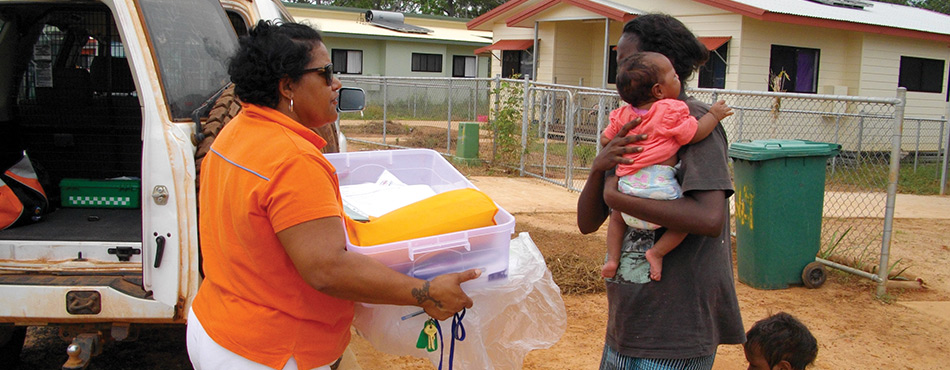
Baby One health worker Johanna Hunt visiting a family in Aurukun.
case study Aboriginal health workers leading the way in Far North Queensland
On Queensland’s Cape York, Aboriginal health workers lead a home visiting programme to support women during the antenatal period and during their babies’ early years. They also give advice on pre-conception care for subsequent pregnancies in a family centred approach.
The Baby One Program is operated by the Apunipima Cape York Health Council and funded by the Australian and Queensland Governments. In 2014-15, in the communities where Apunipima operates:
- 90 per cent of pregnant women and their families in Cape York were signed up to the Baby One Program
- 50 per cent accessed antenatal care before the thirteenth week of their pregnancy
- 100 per cent received five or more antenatal visits during pregnancy with an average of more than 13 antenatal contacts per pregnancy
- 80 per cent of babies were born within normal weight range
- 90 per cent of Cape York babies were born after 36 weeks gestation
- 94 per cent of children under five were recorded as fully immunised (above the national average).
As part of the Government’s Better Start to Life approach, the Government has committed $94 million over three years from 2015-16 to expand two established Aboriginal and Torres Strait Islander maternal and child health programmes:
- New Directions: Mothers and Babies Services will expand from 85 sites to 136 by 2018 to provide more support for families including antenatal, postnatal and child health services for children aged 0 to 4 years.
- By 2018, the Australian Nurse-Family Partnership Program will be expanded from three to 13 sites. This will see more nurse-led home visits aimed at improving prenatal health, child health and development and supporting parents who want to complete their education and find work.
Vulnerable children and families are supported through Government programmes including:
- Stronger Communities for Children - an integrated place-based approach focused on early intervention and prevention services for Indigenous children and young people operating in 10 communities in the Northern Territory. Community members have a strong role in deciding what services are most needed and providers work collaboratively to deliver services. Funding of $25.5 million has been committed over five years to 2017-18.
- Children and Parenting Support - prevention and early intervention including playgroups, parenting courses, home visits, school readiness and peer support groups.
- Communities for Children Facilitating Partners - a whole-of-community approach, focusing on the development and wellbeing of children from 0 to 12 years of age. Services include parenting support, early learning and literacy programmes, peer group support, home visiting services, community events and case management. Funding of $254 million (over five years to 2018‑19) to support 52 communities, including two locations with large Aboriginal populations.
case study supporting families in western NSW
The Wellington Aboriginal Corporation Health Service serves the communities of Wellington, Dubbo, Narromine and Gilgandra in western New South Wales through the Australian Nurse-Family Partnership Program. A highly trained Nurse Home Visitor and an Aboriginal Family Partnership Worker visit Aboriginal and Torres Strait Islander mothers and their families in their own homes to help improve their health, wellbeing, and self-sufficiency.
The visits continue until the child is two years old. They focus on healthy pregnancies, labour and birth, attachment, parenting, the importance of learning through play, healthy lifestyle choices, goal setting, communication skills and healthy relationships. These activities can contribute to long-term improvements in a child’s development and school readiness, as well as positive outcomes for mothers.
Early childhood education
Early childhood education prepares a child for school and can have a positive impact on school attendance and academic success.
target
95 per cent of all Indigenous four-year-olds enrolled in early childhood education (by 2025).Early childhood education prepares a child for school and can have a positive impact on school attendance and academic success.
- In 2013, 85 per cent of Aboriginal and Torres Strait Islander four-year-olds in remote communities were enrolled in early childhood education – a higher rate than in regional areas (74 per cent) and in major cities (67 per cent).5
- All governments are prioritising early childhood education programmes for all children in the year before full-time school.
- The original target to ensure access for all Indigenous four-year-olds in remote communities to early childhood education expired unmet in 2013. Australian governments remain committed to closing the gap in the developmental outcomes of Aboriginal and Torres Strait Islander children by increasing their participation in quality early childhood education. A revised Closing the Gap target has been agreed between Australian governments.
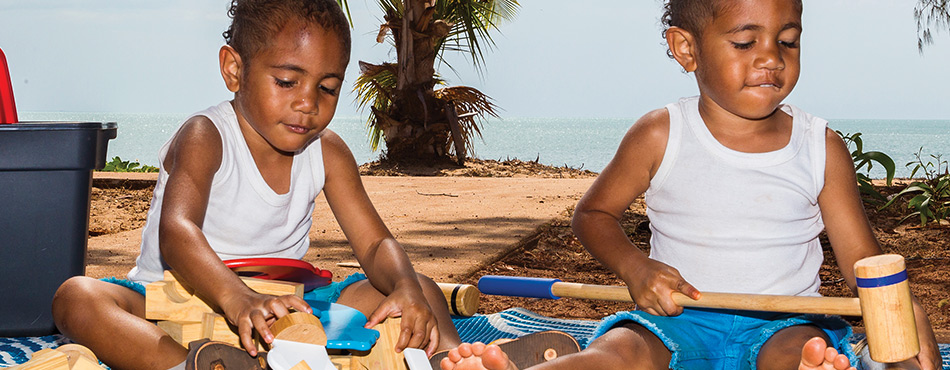
Anthony and Pryce Williams on the beachfront at Seisia. The boys go to the Red Dust Playgroup in Bamaga run by the Northern Peninsula Area Family and Community Services Aboriginal & Torres Strait Islander Corporation.
The renewed target aligns with the objectives and outcomes of the National Partnership Agreement on Universal Access to Early Childhood Education, which includes a focus on lifting the preschool participation rates of all Aboriginal and Torres Strait Islander children, regardless of setting.
Early childhood education prepares a child for school and provides a solid foundation for learning and achieving at school and beyond. This can be delivered through a preschool or childcare setting – the important factors are a quality programme and regular participation. Evidence shows quality early childhood education is particularly important for vulnerable Aboriginal and Torres Strait Islander children and can have a positive impact on school attendance and academic success.
After controlling for a range of factors, Arcos, Holzinger and Biddle (2015) found at ages five to seven (two years after preschool enrolment) participation in preschool had a significant positive impact on vocabulary for Indigenous students. Over the longer term (three to five years after preschool enrolment) positive impacts on developmental outcomes, reading and maths achievement were seen for Aboriginal and Torres Strait Islander students.
Evidence based on the Programme for International Student Assessment survey (OECD, 2014) shows 15-year-old students who had attended at least a year of preschool outperformed students who had not, even after accounting for socio-economic background.
What progress is being made?
In 2013, 85 per cent of Aboriginal and Torres Strait Islander four-year-olds in remote communities were enrolled compared to the required benchmark of 95 per cent 6. Enrolment of Indigenous children in early childhood education programmes was higher in remote areas (85 per cent) than in major cities (67 per cent) and regional areas (74 per cent).
In view of this, the new national target agreed to by all Australian governments focuses on increasing Aboriginal and Torres Strait Islander children’s participation in quality education programmes nationally, extending beyond the original focus on remote communities.
Accelerating progress
To accelerate progress we need to work with state and territory governments to ensure all Aboriginal and Torres Strait Islander children have access to, and are participating in, early childhood education.
Since 2008, the Australian Government has made available more than $2.8 billion to support state and territory governments to increase children’s participation in early childhood education programmes.
The National Partnership Agreement on Universal Access to Early Childhood Education, with a particular focus on Aboriginal and Torres Strait Islander children and vulnerable and disadvantaged children, provides funding to state and territory governments to deliver quality early childhood education programmes for all children in the year before full-time school.
In response to the recommendations of the Productivity Commission's Inquiry into Childcare and Early Childhood Learning, the Australian Government will invest around $40 billion on childcare support over the next four years through the Jobs for Families Childcare Package. It includes a subsidy to reduce the cost barriers for families to access childcare, as well as targeted support for vulnerable children and families.
Integrating services
Better integration of services has been identified as an effective way to improve support for vulnerable children and families. From 2016-17, the Government is investing $10 million annually through the Community Childcare Fund to integrate early childhood, maternal and child health and family support services with schools in a number of disadvantaged Indigenous communities. The focus is on supporting Aboriginal and Torres Strait Islander families so their children make a positive transition to school.
This investment is in response to Creating Parity: Review of Indigenous Training and Employment undertaken by Mr Andrew Forrest in 2014, which recommended all governments prioritise investment in early childhood, including through integrated early childhood services. The Australian Government is working with state and territory governments and other stakeholders to identify locations to expand the delivery of integrated early childhood services.
Empowering parents to be first teachers
A number of initiatives involve working with parents to be their child’s first teacher:
- Families as First Teachers – Indigenous Parenting Support Services Program – builds family knowledge of early learning and supports school readiness for Indigenous children through behaviour modelling, parenting workshops, home visiting and individual consultations. It is operated by the Northern Territory Government in 21 very remote sites, with an additional 14 very remote sites serviced by outreach.
- Home Interaction Program for Parents and Youngsters (HIPPY) – a two year, home-based parenting and early learning programme that empowers parents and carers to be their child’s first teacher. Once fully implemented, HIPPY will operate in 50 communities with an Indigenous focus and 50 non-Indigenous communities that experience high levels of disadvantage.

